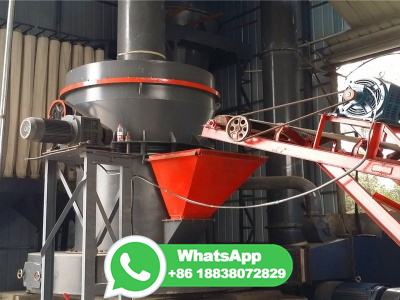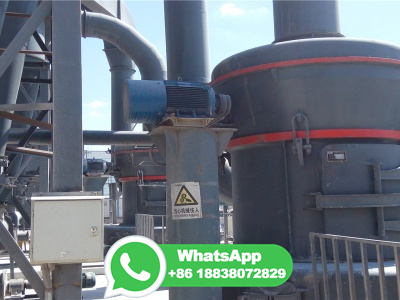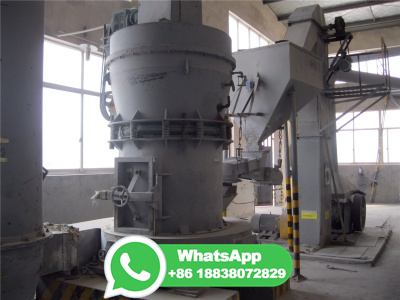Sand From The Sea Processing
Simply complete the form below, click submit, you will get the price list and a GBM representative will contact you within one business day. Please also feel free to contact us by Online Service. ( * Denotes a required field).
 Get Price >
Get Price >Coastal Processes on Long Island An ...
Sand is constantly being rearranged – moving offshore then back on again (sometimes at a different loion) and moving along the shoreline from east to west and/or vice versa. These processes are normal; however, when a smaller amount of sediment is permanently removed from the system, the deficit is considered to be an erosion problem. The process of coastal .
 Get Price >
Get Price >Science of Summer: Where Does Beach Sand Come From?
· "The sand''s unique composition, color and grain size are a result of the source rocks it came from, but also a result of coastal processes that modify the sand over long periods of time."
 Get Price >
Get Price >Coastal Management
· They''re low lying wooden walls that extend out to sea. The idea of groynes is to capture sand that moves down the beach via longshore drift and help build up a larger section of beach in front of an area that''s experiencing coastal erosion. The new beach will increase the distance that waves have to travel to reach the coast and, in the process, they''ll lose most of .
 Get Price >
Get Price >How is Salt Extracted from the Sea? | LEAFtv
The process for extracting salt from sea water is an ancient technology and involves evaporation ponds. Shallow, waterproof ponds are dug out and connected to the sea by means of a short canal. A broad area and shallow depth allow a given volume of water to absorb more sunlight. The pond is flooded, and then the canal is closed. The sun evaporates the water. As the water vaporizes, the salt ...
 Get Price >
Get Price >Top 20 Sand Exporting Countries
· Processing . After the sand is extracted it is sent to a processing plant that is usually in the general vicinity of where the deposit of sand being extracted. The first step in processing sand is called sorting, in which the sand is mixed with water into a slurry and then discharged through a large screen to separate out foreign material, such as rocks or sticks. .
 Get Price >
Get Price >Cities from the sea: the true cost of reclaimed land ...
· Built on 240acres of land artificially reclaimed from the sea, they are part of the Seri Tanjung Pinang 1 (STP1) project. Started in 2006, .
 Get Price >
Get Price >What is dredging?
As sand and silt washes downstream, sedimentation gradually fill channels and harbors. This material must be periodically removed by dredging. Dredging is the removal of sediments and debris from the bottom of lakes, rivers, harbors, and other water bodies. It is a routine necessity in waterways around the world because sedimentation—the natural process of sand and silt washing downstream ...
 Get Price >
Get Price >Coasts in Crisis, Coastal Change
Diverse and complex natural processes continually change coasts physically, chemically, and biologically, at scales that range from microscopic (grains of sand) to global (changes in sea level). Regional and local characteristics of coasts control the differing interactions and relative importance of these natural processes. Human activity adds yet another dimension to coastal change by ...
 Get Price >
Get Price >Coastal Processes
Sea Level Rise and Coastal Erosion. Sea level has risen by about 120 m (400 ft) since the peak of the last ice age about 19,000 years ago. The coast was about 100 km (60 mi) farther offshore from Long Island at that time. Since then ice caps have shrunk, returning water to the sea and the seas have warmed and expanded. Global average sea level is currently rising at the rate of about 2 mm per ...
 Get Price >
Get Price >Barrier Islands | Coastal Processes, Hazards, and Society
Barrier islands are shoreparallel elongated accumulations of sand that are constructed by waves and build vertically by the accumulation of sand from wind transport. They can be found along approximately 15% of the world''s existing coastlines, with the majority of them loed along trailing edge or marginal sea coasts with wide, low gradient continental shelves. In some .
 Get Price >
Get Price >What is the reason for not using sea and desert sand for ...
· Sea sand does not have high compressive strength, high tensile strength etc so it cannot be used in construction activities. In addition to this, the salt in sea sand tends to absorb moisture from ...
 Get Price >
Get Price >Why is sea sand not used for construction purposes ...
Answer (1 of 18): Sand (primarily silica) is used in construction as a component in various materials like concrete, mortar etc. Definitely the salts adsorbed (dissolution might not actually occur) on sand are going to affect the durability in reinforced concrete structures but in plain concret...
 Get Price >
Get Price >Why the world is running out of sand
· Why the world is running out of sand. It may be little more than grains of weathered rock, and can be found in deserts and on beaches around the world, but sand .
 Get Price >
Get Price >sea sand mining process
Sand, gravel and phosphate from the sea « World Ocean Review The extraction of mineral resources from the sea is by no means a new activity Sea coastline and offshore islands to balance out the sand masses washed The second process involves the ship pulling a suction pipe with a draghead
 Get Price >
Get Price >Chapter 9 Beach Erosion and Loss
to the sea. It includes the dune, the dry sand beach, the foreshore, and the offshore portion of a beach in the surf zone. The profile can be described by the distance (L) offshore where approaching waves first affect the bottom and the depth at that place (D). Typically the ratio L/D is about 100, though it can vary between fifty and two hundred depending if the beach is .
 Get Price >
Get Price >Silica Sand Processing Sand Washing Plant Equipment
· Summary of the Silica Sand Processing Plant Equipment. In general most silica sands can be beneficiated to acceptable specifiions by the flowsheet illustrated. Reagent cost for flotation is low, being in the order of 5 to 10 cents per ton of sand treated. If feldspars and mica must also be removed, reagent costs may approach a maximum of 50 cents per ton. Laboratory test work is advisable ...
 Get Price >
Get Price >What is dredging?
As sand and silt washes downstream, sedimentation gradually fill channels and harbors. This material must be periodically removed by dredging. Dredging is the removal of sediments and debris from the bottom of lakes, rivers, harbors, and other water bodies. It is a routine necessity in waterways around the world because sedimentation—the natural process of sand and silt washing downstream ...
 Get Price >
Get Price >(PDF) Coastal Processes and Landforms
Shorelines are always subjected to both continental and oceanic processes. Waves, tides and currents are very powerful geomorphic agents. The erosional and depositional work of the sea .
 Get Price >
Get Price >Coastal Processes Within the Plan Area
process as sea levels have been rising since the last glaciation. This image shows the ruins of ''s church Eccles on Sea The church was on the landward side of the sand dunes in 1823, but by 1895 when it completely collapsed it was situated on the beach. This natural process of landward movement cannot be readily
 Get Price >
Get Price >How to Clean Beach Sand: 12 Steps (with Pictures)
· You''ll likely lose some sand during the cleaning process. When you collect sand at the beach, gather twice as much sand as you need for your project. This will ensure you''ll have enough even if you lose some sand when you clean it. 2. Sift sand to remove unwanted rocks and debris. If you have an old colander or strainer, use it to sift out rocks and other debris from your sand. You can also ...
 Get Price >
Get Price >Impacts of Sand Mining
The effect of mining is compounded by the effect of sea level rise. Any volume of sand exported from streambeds and coastal areas is a loss to the system. Excessive instream sand mining is a threat to bridges, river banks and nearby structures. Sand mining also affects the adjoining groundwater system and the uses that local people make of the river. Instream sand mining .
 Get Price >
Get Price >(PDF) Coastal Processes and Landforms
Shorelines are always subjected to both continental and oceanic processes. Waves, tides and currents are very powerful geomorphic agents. The erosional and .
 Get Price >
Get Price >Natural causes of coastal erosion
Natural coastal erosion of sandy coasts is caused by many factors which are shortly reviewed in this article. Coastal erosion may also result from maninduced activities. Erosion due to human interventions is described in Human causes of coastal of the content of this article is drawn from Mangor et al. 2017 .
 Get Price >
Get Price >Sand Dunes Succession
The process of windblown grains of sand jumping up the beach is called saltation. Sometimes you can see a cloud of sand moving up the beach in this way. Stage 1: Migration. The sand grains move inland until they meet some form of obstruction. This might be a pile of seaweed dumped high up the shore by the sea, a lump of driftwood, a fence, a pool or muddy, sticky ground. Alternatively, sand ...
 Get Price >
Get Price >The Namib Sand Sea: Dune forms, processes sediments ...
Lancaster (geology, Arizona State U.) reports on investigations of dune forms, processes and sediments in the Namib Sand Sea of southwestern Africa, which are used to develop models for the formation of dunes and sand seas and their rock equivalents. Annotation copyright Book News, Inc. .
 Get Price >
Get Price >What Is Fine Aggregate | Types of Fine Aggregates ...
Fine aggregates are essentially any natural sand particles won from the land through the mining process. Fine aggregates consist of natural sand or any crushed stone particles that are ¼" or product is often referred to as 1/4''" minus as it refers to the size, or grading, of this particular aggregate.
 Get Price >
Get Price >Oil Sands 101: Process Overview | Oil Sands Magazine
· PROCESS OVERVIEW. Petroleum products are produced from the oil sands through 3 basic steps: Extraction of the bitumen from the oil sands, where the solids and water are removed. Upgrading of the heavy bitumen to a lighter, intermediate crude oil product. Refining of the crude oil into final products such as gasoline, lubricants and diluents. Traditionally, a .
 Get Price >
Get Price >Beach Mining Tips
· First and foremost, you should not be in a hurry to process the sand from the beaches. Miners can have a tendency to work fast in an effort to process as much material as possible. This is generally a pretty good idea, but when mining beach sands it will cause you all sorts of troubles. The gold bearing sands along the Pacific Ocean beaches are heavily made .
 Get Price >
Get Price >Coastal erosion sediment systems
Ocean swells from the Tasman Sea and Southern Ocean are very energetic, and drive sand back and forth along this sparselyinhabited shoreline. In contrast, the east coast''s embayed ( have bays), disconnected sand systems are more developed, with ports and residential subdivisions. This lee shore ( it has wind blowing onto it from the sea) has gentler wave action, and is .
 Get Price >
Get Price >Oil sands
Oil sands, tar sands, crude bitumen, or bituminous sands, are a type of unconventional petroleum sands are either loose sands or partially consolidated sandstone containing a naturally occurring mixture of sand, clay, and water, soaked with bitumen, a dense and extremely viscous form of petroleum.. Significant bitumen deposits are reported in Canada, Kazakhstan, .













